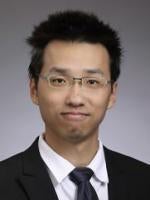In ABS Global, Inc., Genus plc v. Cytonome/ST, LLC, the case addresses a claim construction issue regarding whether a claim term is plural-allowing.
Background
ABS Global Inc. and Genus plc (collectively, ABS) petitioned for an inter partes review of claims 1, 2, 6, 8, and 9 of U.S. Patent No. 10,583,439 (the “’439 patent”) owned by Cytonome/ST, LLC. The Patent Trial and Appeal Board (“Board”) determined that ABS did not show any challenged claim to be unpatentable. The Board’s sole basis was that Simonnet, ABS’s primary reference, failed to disclose one limitation, “a fluid focusing region configured to focus the sample stream.” This limitation follows the limitation “an inlet configured to receive a sample stream” and precedes the limitation reciting an inspection region. The Board’s finding relied on a claim construction for the “fluid focusing region” limitation that requires only a single sample stream from entry of the sample at least to inspection. The Board found Simonnet’s figures show a split sample stream with a gap in the middle—i.e., not a single sample stream—and therefore upheld the claims. ABS appealed.
Issues
- Did the Board err in its claim construction that “the sample stream” is limited to a single sample stream?
- Did the Board err in finding ABS has not shown that claims 1, 2, 6, 8, and 9 are unpatentable under the substantial evidence standard?
Holding(s)
- Yes. The Board erred in its claim construction that “the sample stream” is limited to a singular-only sample stream. The Federal Circuit reversed this construction and held that “the sample stream” is not limited to a singular-only sample stream.
- Yes. The Board erred in finding ABS has not shown that claims 1, 2, 6, 8, and 9 are unpatentable under the substantial evidence standard. The Federal Circuit reversed the Board’s finding with respect to claims 1 and 8 and found those claims anticipated and vacated the Board’s decision with respect to claims 2, 6, and 9 and remanded to the Board.
Reasoning
Claim construction. The Federal Circuit noted that “the sample stream” in the limitation at issue refers back to the earlier-recited “a sample stream” as an antecedent. If “a sample stream” has a plural-allowing meaning, so does “the sample stream.”
The Federal Circuit found that, for an open-ended “comprising” claim like claim 1 of the ’439 patent, “use of ‘a’ or ‘an’ before a noun naming an object requires that the phrase be construed to mean ‘one or more’ unless the context sufficiently indicates otherwise.” Lite-Netics, LLC v. Nu Tsai Capital LLC, 60 F.4th 1335, 1345 (Fed. Cir. 2023). Further, the Federal Circuit noted that the ’439 patent’s specification states that “for the purposes of the present disclosure, the term ‘a’ or ‘an’ entity refers to one or more of that entity. As such, the terms ‘a’ or ‘an’, ‘one or more’ and ‘at least one’ can be used interchangeably herein.” The Federal Circuit found that this definition reinforces the applicability here of the “one or more” general rule concerning “a” and “an.” The Federal Circuit also noted that neither the prosecution history nor the specification demanded a singular-only meaning.
The Federal Circuit rejected the Board’s central argument that a plural-allowing scope would be inconsistent with claim 2, which requires that the focusing fluid be “introduced into the flow channel symmetrically with respect to a centerline of the sample stream.” The Board reasoned that “a centerline of the sample stream” must lie in the sample fluid, which, the Board said, would not be true of a centerline (understood as a singular) of a pair of streams or a split stream with a gap in the middle filled by focusing fluid, where the centerline ran through the focusing fluid. However, the Federal Circuit found that the language “a centerline” in claim 2 is itself presumptively plural-allowing. The Federal Circuit further held that the Board’s reasoning does not address the drawing of separate centerlines for separate streams and that, even for a single centerline for a pair of streams, the claim is broad enough to cover a centerline of a pair of streams. Per the Federal Circuit, a “centerline of the sample stream” is merely a reference point for how focusing fluid should be introduced, which does not preclude a sample-stream centerline from running through focusing fluid.
Validity. For independent claim 1, the Federal Circuit found that under the proper construction “the sample stream” may refer to one or more sample streams and therefore the Simonnet reference satisfies this claim limitation. As the Board found that Simonnet discloses every other element of claim 1 and Cytonome did not meaningfully challenge those findings on appeal, the Federal Circuit held that the evidence compelled a finding that claim 1 is anticipated. Similarly, the Federal Circuit found that the uncontested evidence establishes that Simonnet discloses all limitations of claim 8. Thus, the Federal Circuit reversed the Board’s determination and held claims 1 and 8 are anticipated by Simonnet.
As there were unresolved issues with respect to claims 2 and 6—the parties continued to dispute their proper application (and perhaps interpretation)—and with respect to claim 9—the Board has not decided the merits of components of ABS’s obviousness challenge, including the motivation to combine Simonnet and Kummrow—the Federal Circuit vacated and remanded these claims to the Board for further consideration.



 />i
/>i

